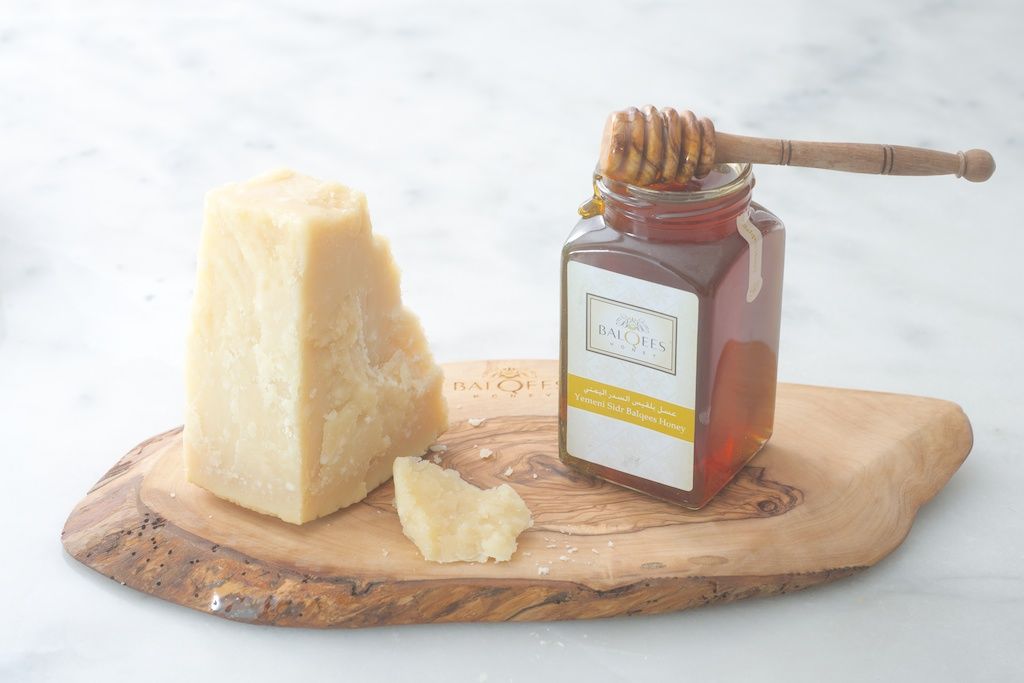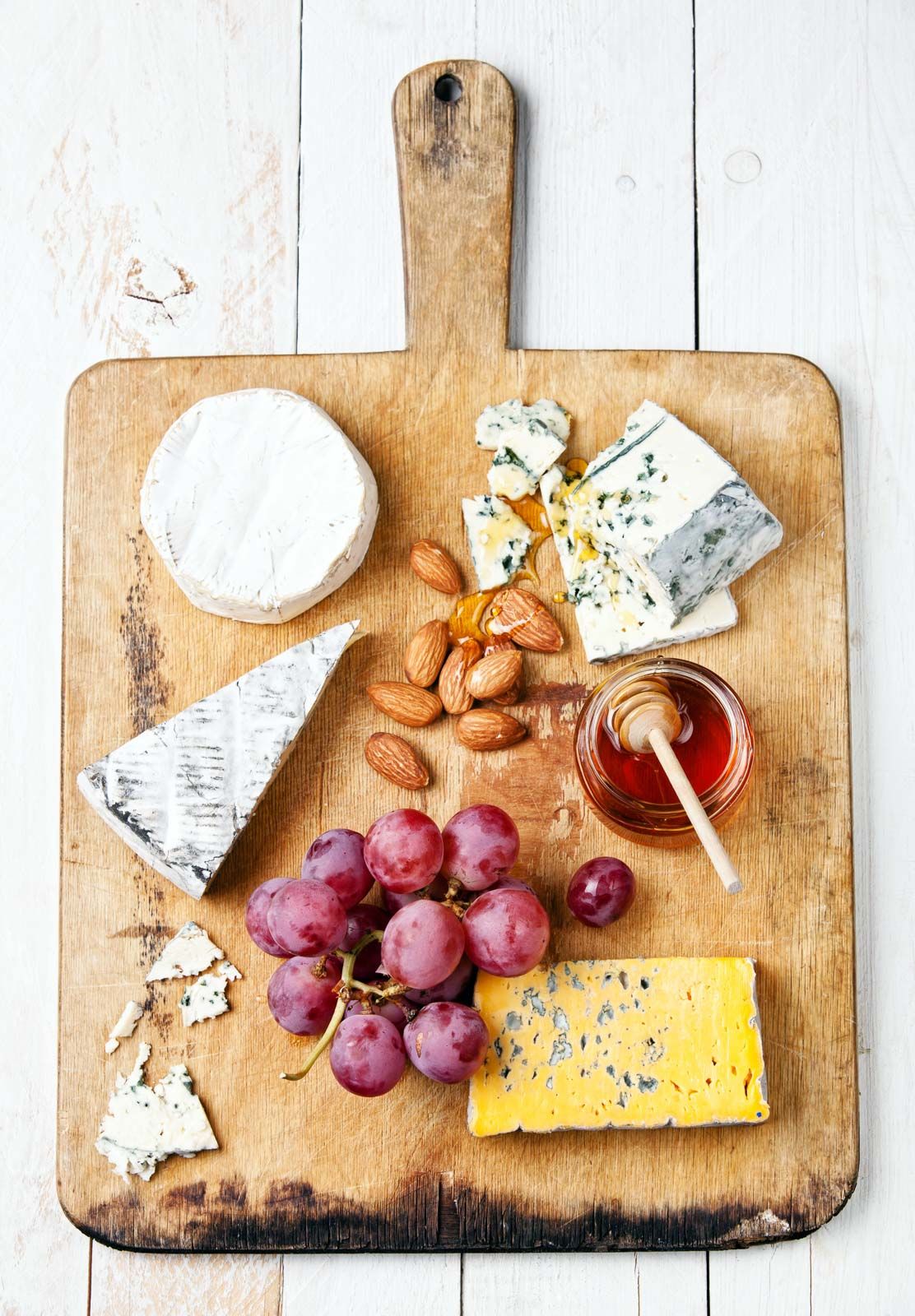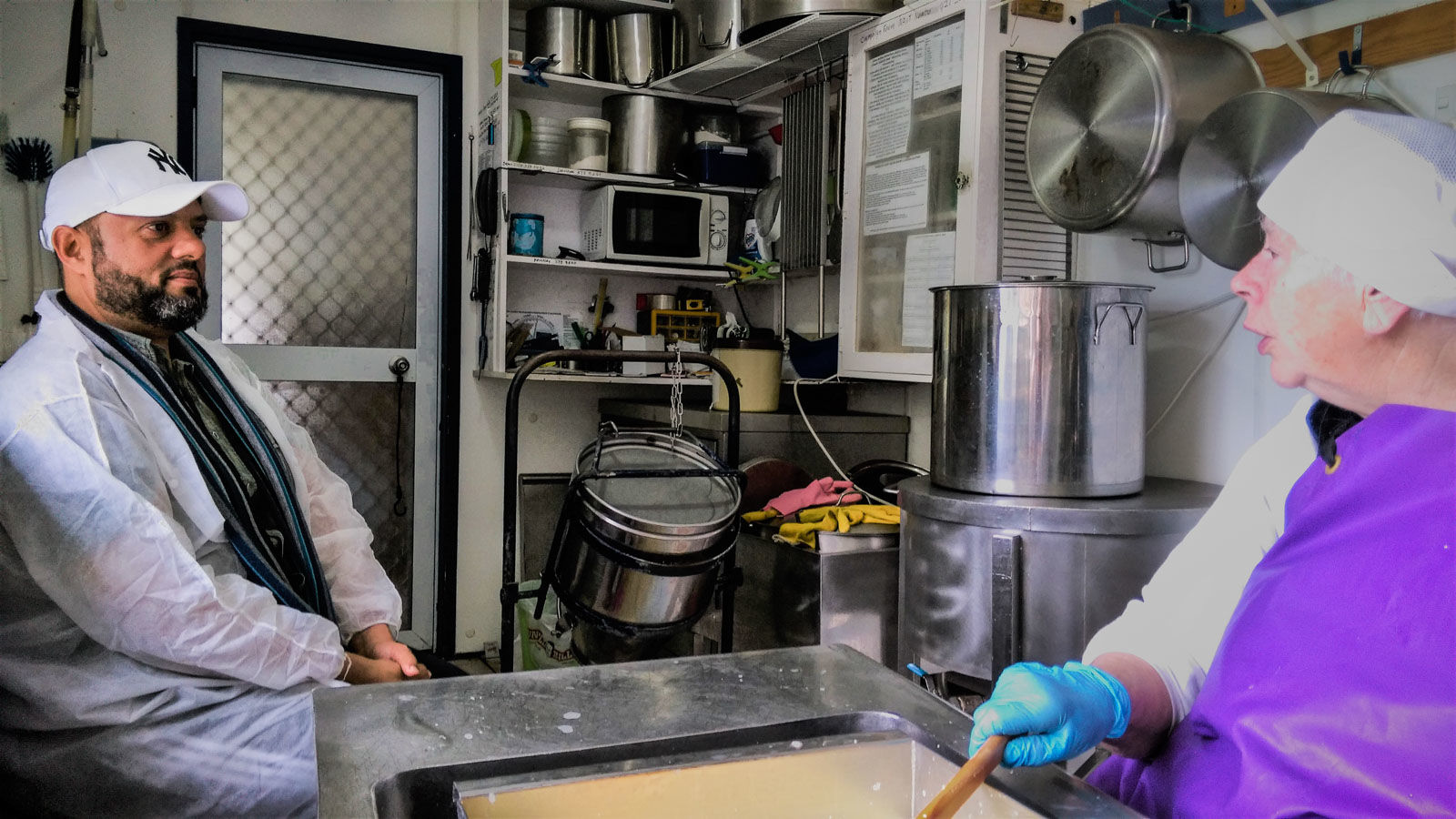
A hunk of cheese on its own, with fresh bread or a salty cracker makes for a delicious snack, the perfect way to end dinner, or even a meal in itself as a sharing platter. Did you know that cheese goes exceptionally well with raw honey. But which cheese and honey should you choose? As it’s National Cheese Day here are some of my recommendations.
The saltiness of cheese and the sweetness of honey is a delicious pairing but for best result try to balance the flavours and match the intensity of each. For instance, with a smoky cheese is the perfect match with a smoky-tasting honey; the honey is meant to elevate the flavour of cheese, not smother it (and vice versa).
Cheese and honey have a lot in common, both go well on their own or on a hunk of fresh baguette. The ‘terroir’, as the French say, is important to cheese and for raw honey. Both are made indirectly from plants and so the taste is affected by the climate and environment. Both a good cheese and a raw honey will carry a story about where it comes from, how it was made and by whom. Understanding the provenance helps us appreciate the product even more and can make for interesting conversation at the table. Beekeeping and honey production, as with cheese-making, is an art form where the producers respect the product. I believe this love translates to the plate so always look for the best quality product from the small producer to get the best experience.
There are literally thousands of cheeses to choose from all over the world, Britain has 750 varieties alone and France 400 and then there are great cheeses from Italy and Germany and the list goes on. When choosing cheeses for a cheeseboard consider a mix of cows’, goat and sheep’s milk varieties. Then there are the four basic categories: aged, soft, firm, and blue. For a good variety, choose at least one from each group and think about taste and texture. Here are some suggestions:
Be sure to choose raw honey to not only get all the health benefits but the texture and flavours are far more interesting and complex than pasteurized commercial honeys.
When you taste raw honey try and notice the different flavours:

Balqees Wildflower Sidr honey from Yemen’s Hadramout region in the Southern Arabian Peninsula goes really well with soft cheeses like an acidic feta where the sweetness from the honey complements it really well. Ricotta drizzled with Sidr honey is a delight too and can be served for breakfast or as a dessert. This pairing is beautiful with fruit such as figs, apricots, and berries. If you prefer scooping your bread into a soft, ripened Camembert, then a drizzle of Sidr would make a perfect package.
I love a strong cheddar, one of the best I ever tasted was in New Zealand and made by an amazing lady, Biddy Fraser-Davies, who I met whilst visiting beekeepers there. Biddy’s farm is in the North Island of the country, on the border between the Tararua and Wairarapa. There you will find Biddy and her Jersey cows: Holly, Isobel, Dizzy and Patsy. That’s it, just four cows. Her cheese is award winning and the cheese choice of the British royal family when they visit New Zealand. The Cwmglyn cheese, like all her cheeses handmade by Biddy herself, is made in the traditional English farmhouse style with a wholly natural rind. This paired with a fruity Sidr infusion like the Balqees Orange Grove (infused with orange, clementine and mandarin zest) would be perfect. Take a slice of a mature Cheddar or a piece of Lincolnshire Poacher on a cracker with a drizzle of the Orange Grove, close your eyes and savour the moment.
Honeydew is runny and smooth and comes from the beech tree sap. It is deliciously sweet, natural and very good for you. This pairs beautifully with a smelly sheep’s milk cheese like Roquefort. The pungent flavor and distinctive blue veins in a blue cheese are produced by adding a penicillium type mould and a process called needling. When it hits the palate, you are transported into the deep woods with earthy and malty flavours – reminiscent of pine forests. As honeydew is an Alpine honey it’s a perfect fit.
Another cheese that will stand up to the distinctive flavour of Honeydew is rich, meaty Epoisses. This washed-rind cheese with its reddish cover is supposed to have been one of Napoleon’s favourites. This is an incredibly strong cheese and one of the ‘stinkiest’. Its flavour is described as gamey, creamy, earthy and ‘mushroomy’. Napoleon also had a strong connection with the honey bee and he chose this symbol as his emblem. There are a few theories as to why, maybe it was because the honey bee is known for its hard working ways and being highly industrious, or perhaps because as the producer of honey, the bee symbolises sweetness and benevolence.
For a tasty sweet and sour combination try walnut bread with Epoisses, sliced figs, rosemary and a drizzle of raw honeydew.

Riath and Biddy talking about cheese
Serve cheese at room temperature to get the best flavour (plus it’s easier to cut). Try to use one knife per cheese so you don’t mix their flavours (especially the stronger blue cheeses and the milder ones). Pour raw honey into pretty ceramic pots or keep in its glass jar so people can help themselves. Make sure you have plenty of little spoons and a honey drizzler.
To add to the experience and conversation of a gathering, a whole piece of honeycomb is a beautiful way to complement your cheese plate and a centrepiece for the table. Cambozola or a creamy Gorgonzola go well with honeycomb. Leaving the honeycomb whole is visually stunning on a cheese plate so your friends can cut off pieces of honeycomb to eat with their cheese.
And so, there you have your cheese and honey plate. Writing this has made me want to head straight to the nearest Fromagerie.
Cheese and honey are used in a variety of ways in recipes. Crepes are always a hit with children and adults’ alike and raw honey with ricotta and blueberry compote is delicious. A friend recently sent pictures of a buckwheat raclette pancake with goat’s cheese and Acacia honey she ordered at La Saint Georges Creperie in Rennes, France. I love goat’s cheese in a filo pastry with a drizzle of honey to add a touch of sweetness.
There is so much to celebrate and explore with these two foods. Let me know if you have a preferred honey and cheese combination and let’s share the love of good food together.
Sign up for exclusive offers, recipes and the latest raw honey news.